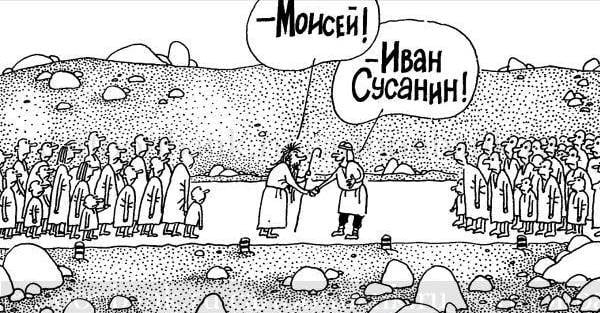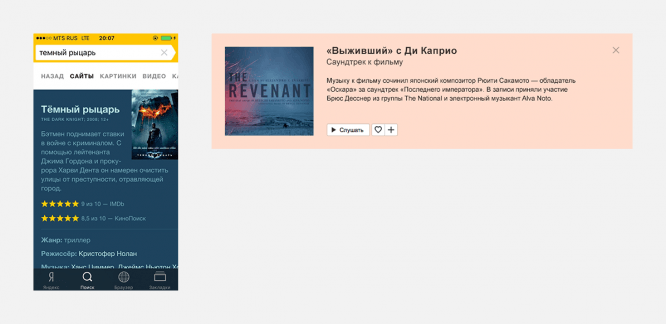“Designer, defend yourself!” or how to present a design to a client
I used to do design presentations like this: I took out my laptop, opened the layout and said, “What do you say?”. Then I only had time to timidly insert my comments, which sounded like excuses.
Or even worse, instead of having everything organized through a Google Sheet calendar template, I sent the customer an email with an attached layout and the comment “Waiting for feedback.” In response, I received a letter with dozens of revision points. Each subsequent letter was replenished with emotional sayings, and the design only got worse.
I even started to believe in the story that clients are assholes, and I wanted to go to a special community-monastery, worship memes about clients and cry in comments to comrades in misfortune. Fortunately, then I did not know such.

In one of the projects, I brought a mockup to the artdir. He looked at him and said: “Well, defend yourself …”. I was confused, because for me the protection of design is when I am attacked and I defend myself, but here the fact of the attack was not recorded. This is how I learned that defense and defense are two different things. Protecting the design when you speak first was easier.
The most valuable advice I’ve ever received about design presentation is: “Defend your design before it gets attacked.”
What does it mean to defend forward
It is important that you, as a designer, have to focus the host party on important issues and explain why you did it that way. If this is not done, then the client will calmly cling to what seems strange to him: the font is somehow boring, the sky is not blue … He just thinks that this is a design.
You can only defend forward in a live meeting or skype call with a screencast. Important: the client has not seen the design before this moment.
The designer leads the meeting
A client gave you a problem a week ago. The client has a lot to do in accounting, advertising, social media, and the couriers went on strike yesterday. He may even forget exactly how the task sounded for the designers, he remembers that “Designers make packaging for us”.
And so the meeting begins, and the first thing that happens: they show him a picture and say: “Here is the package, what do you think?” The client will not be at a loss, he will start talking. His eye caught a strange blue color, and that the task was “to make the packaging more pleasant for young people” he completely forgot. Then he will lead the meeting, and you will defend yourself.

Who runs the show?
If the designer took responsibility, thought out the scenario of the meeting, how and in what sequence everything would take place, then everything would be different. The client would be seated in the auditorium, and he would be happy that now he does not need to steer – there is a person here who knows what to do.
How to conduct a meeting?
I always start a meeting according to one general scenario.
1. I remind you of the task …
The first thing I do is prepare the client for my decision. Before showing the pictures, I remind you what problem we solved.
For example:
“We were faced with the task of making packaging that would be understandable to young people in terms of mood, since the existing packaging is associated with something old, Soviet, and they don’t want to use the product …”
With these words, I tune the client to the level of “we are solving a specific problem, and not just discussing pictures.”
2. And now everything will go like this …
Then I clarify:
“… Now I will show the solution and explain how we arrived at it. Then we will discuss and you will give comments. If we went the wrong way, we need to find out today, so feel free to tell us … ”
So I politely asked the client not to interrupt me while I was talking. When we saw that the customer agrees with this, we take out the picture No. 1 and begin the defense according to the scenario thought out in advance.
3. First we went over there … through this …

I prefer to talk about anchor points in search of a solution, and show the directions that we have discarded.
“First, we went and looked at how the packaging looks like in other market representatives. The majority try to play on the theme of sewing, craft, etc. It seems to us that this is not the effect that we want to achieve, given the audience of young people, Italian fashion and everything that we talked about at our first meetings … ”
So I can see if we really went to the wrong place, or maybe the client will say, no, we have to go to the topic of sewing. At the same time, I prepare him for the final decision so that he will not just have a picture in front of his eyes, but there will be a story with arguments why this was born.
4.… and come here!
We will talk about the presentation of our solution in detail in the next issue.
Again:
You cannot send the layout before the meeting.
You cannot show and be silent.
You cannot show and ask: “What do you think?”
You are hosting the meeting.
You need to prepare for the presentation.
Tell us what difficulties you have with protecting your design?
Write to private messages.
…
Source: LeanDesign

